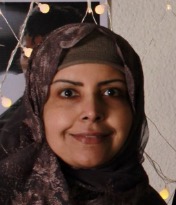Day 2 :
Keynote Forum
Rolando Toyos,
Medical Director and Founder of Toyos Clinic, USA
Keynote: Osmolarity in Dry Eye Disease

Biography:
Rolando Toyos is the Medical Director and Founder of Toyos Clinic. He received his Bachelor’s degree and Master’s degree from the University of California, Berkeley and Stanford University, respectively. He completed his Medical degree from the University of Illinois. He is Board Certified in Ophthalmology and specialized in Cataract Surgery, LASIK, Glaucoma, and Dry Eye. He is one of the most experienced surgeons in the country, completing over 35,000 cataract surgeries, 20,000 glaucoma laser treatments and 25,000 LASIK surgeries. He was the first surgeon to combine Laser Cataract Surgery with AquaLase creating a new Laser for Cataract Surgery L4C procedure. He holds various patents including one for a light based technology used for the treatment of dry eye. He is the
inventor of the procedure Intense Pulse Light (IPL) for dry eye disease.
Abstract:
Purpose: In this prospective study, we show the influence of intense pulsed light therapy (IPL) on tear osmolarity, an increasingly
important metric of dry eye disease. Previous studies have measured the effectiveness IPL has had on other metrics including tear break up time (TBUT), lipid layer grade (LLG), tear evaporation rate (TER), tear meniscus height (TMH), and subjective responses from patients.
Methods: Single center prospective study included 30 patients and 60 eyes. Patient’s ages ranged from 18 to 90 years old with
75% of participants being female. All patients had dry eye disease with a TBUT of 10 seconds or less. Tear osmolarity was
measured bilaterally before a single IPL treatment followed by one drop of topical NSAID. Bilateral tear osmolarity was then measured again one month later.
Results: Average tear osmolarity pre-treatment OD was 303 mOsm/L and OS was 302 mOsm/L. Average tear osmolarity posttreatment was OD 295 mOsm/L and OS 295 mOsm/L. Paired t-test was performed showing the change in tear osmolarity to
be statistically significant in each eye, OD p=0.002 and OS p=0.001.
Conclusions: A statistically significant decrease in tear osmolarity from abnormal to normal range demonstrates an improvement in tear film quality after one treatment with IPL, thus suggesting IPL's effectiveness in treating dry eye disease.
- Neuro-Ophthalmology | Cornea Infection and Inflammation | Glaucoma
Location: Chamber Suite

Chair
Brunno Dantas
Brazilian Society Of Ophthalmology, Brazil
Session Introduction
Katalia Koves
Semmelweis University of Medicine, Hungary
Title: Basic research about the neural connections between the eye and the neuroendocrine system

Biography:
Professor Katalin Köves MD, PhD, DSc graduated from Medical University of Pécs, Hungary and she was employed by the Department of Anatomy, Histology and Embryology. Later she moved to the Department of Anatomy, Histology and Embryology of Semmelweis University, Budapest, Hungary. She received a four- year scholarship in Dr. Arimura’s laboratory (Tulane University, New Orleans, LA) where Pituitary Adenylate Cyclase Activating Polypeptide(PACAP) was discovered. After returning to Hungary she investigated the presence of PACAP in various organs and its role in the gonadotropic hormone secretion. Now she is mainly interested in studying neuronal connections using various tracing techniques and immunohistochemistry
Abstract:
Ample evidence indicates that both retinofugal (classical visual and the retinohypothalamic pathway) and retinopetal connections (centrifugal visual system) are found between the eye and the central nervous system. The most important retinofugal connection is the classical visual pathway. Scharrer hypothesized that photic stimuli from the eye are conjucted not only to the main visual centers, but also to some hypothalamic neurons and then to neuroendocrine effector cells. He called this system as photoneuroendocrine. The anatomical basis of this system is the retinohypothalamic tract. The main retinorecipient area of the hypothalamus is the suprachiasmatic nucleus which regulates biological rhythms (biological clock). More than hundred years ago, Cajal and Dogiel described termination pattern of the fibers deriving from the avian central nervous system. However, the location of nerve cell bodies was not known at that time. In the last century many data accumulated about these neurons not only in lower vertebrates but in mammals as well. The structures where the neurons give rise to the centrifugal visual fibers in mammals are the following: The pretectum, midbrain, dentate gyrus, hippocampus, olfactory
tubercle, habenula, indusium griseum, and the hypothalamus. The centrifugal visual fibers enter the optic nerve layer, then reach the inner plexiform layer and terminate in the inner nuclear layer of the retina in the vicinity of the amacrine cells. A series of neuropeptides and neurotransmitters have been described in the origin of the centrifugal visual system i.e., luteinizing
hormone releasing hormone, pituitary adenylate cyclase activating polypeptide, vasoactive intestinal polypeptide, serotonin, histamine and leu-enkephalin. Several hypotheses exist on the function of this system. Centrifugal visual system arising from the histaminergic mammillary neurons modifies the sleep/wake cycle. Hallucinogenic drugs through the limbic system may
cause disturbance of visual function and result in seeing visual hallucinations or distorted images.

Biography:
Jagmohan Dyal Singh is pursuing his BS in Biochemistry, Genetics and Molecular Biology (Major) and Applied Mathematics (Minor) through National Credit Policy of ACE (American Council of Education). He himself is suffering from amblyopia comorbid with refractive squint. He corrected his visual handicap by designing a special type of spectacle which gave him the power to read and eventually complete his education.
Abstract:
Lazy Eye” syndrome or amblyopia is a common phenomenon scattered throughout the human population. It is estimated that around 5% of the human population suffers from this syndrome along with diplopia, and refractive squint present in many or rather most of the cases. It is quite possible that other animal species that depend on stereoscopic vision for their survival are also
prone to this condition in the same frequency as the human population. During prehistoric and ancient times, this condition did not interfere with human survival and this is the reason of its prevalence among the human population even in the present times. As it is present among 5% of the human population, it is no doubt a genetic condition. It has presented itself in individuals that have a genetic history of this condition in the maternal or paternal lineages. This condition is a major liability for the sufferer in the modern world. During ancient times, when man started as a hunter-gatherer and until the human world did not depend on the written word, this condition was a benign syndrome, possibly without any competitive disadvantage. That is the reason this condition has survived into the modern world. In the modern world, the major disadvantage is in field of academics. Children suffering from this condition are at a disadvantage due to their inability to study like other normal children. In the amblyopic patients, having diplopia and refractive squint near stereoscopic vision is disrupted during reading and other near vision activities. Two different images that are created in the visual cortices do not overlap. The glasses force the visual cortices to fuse the two different images into one which otherwise is impossible and makes amblyopia comorbid with refractive squint a difficult malady to correct with present treatment options. These glasses are based on the neurobiology of vision. How stereoscopic vision is processed by the brain and the understanding of underlying cause that produces this deficit in the brain of individuals afflicted with this disorder is also conceptualized in this
treatment option. Why 3D optics is helpful in correcting this disorder in the brain is also hypothesized in this paper. These glasses should only be used for near vision activities like reading through a book but not for reading through a computer screen or watching television, as no diplopia is present when words or visuals are seen on an illuminated background, although amblyopic patients who suffer headache while using a computer shall benefit immensely from this procedure. This method will correct the visual deficit and convergence insufficiency with 100% positive results and shall improve the academic capabilities of children suffering from amblyopia and refractive squint who complain of diplopia and headache while reading. These glasses will also correct the binocular acuity of individuals suffering from amblyopia. This can be done by breaking the suppression of visual signals sent by the amblyopic
eye to the brain. Prolonged use of these glasses will train the brain to make use of signals and images created in both the visual cortices into one. Hence, the brain will be forced to utilize visual signals from both the eyes due to its neurophysiology.

Biography:
Brunno Dantas is an ophthalmologist. Professor of special contact lenses of the specialization course in ophthalmology of the Brazilian Society of Ophthalmology
Abstract:
Keratoconus is a non-inflammatory, often progressive, corneal disease that makes the cornea thinner and modifies its normal curvature, leading to poor visual acuity. The cornea often acquires anomalous conical shape, from which comes its name.This corneal clinical condition has always been considered as an impediment to the orthokeratology technique. It affects approximately
one person in every two thousand people worldwide, causing visual impairment and usually develops up to the age of 40 years. There are some techniques and conducts in the management of keratoconus, among them corneal crosslink, corneal contact lens adaptation and scleral lenses, intracorneal ring implantation, and corneal transplantation. The need for adaptation of corneal or scleral lenses after surgical procedures is relatively common, even if this procedure is minimally invasive, which is not well received by patients, who hoped to avoid or reduce the need for Use of these lenses. Observing the ability to reshape the cornea with keratoconus, in some initial cases it is possible to make a discreet change in the technique and in the way of adapting the orthokeratology lens, achieving in some cases good visual acuity of these patients without the necessity of using corneal contact lenses or scleral lenses during the day. The application of this variation of the orthokeratology technique allowed, in these selected cases of keratoconus, the improvement of the visual acuity of the patient during the day, making unnecessary the use of rigid contact lenses.

Biography:
Sahar Awwad is a Post-doctoral Research Scientist at the University College London, School of Pharmacy, UK. She has recently completed her PhD under the supervision of Professor Steve Brocchini and Professor Sir Peng Tee Khaw. She obtained two scholarships for her PhD: (i) UCL Overseas Research Scholarship (ORS), and (ii) NIHR Biomedical Research in Ophthalmology at Moorfields Hospital. She has done her MSc in Drug Delivery from the University of London, School of Pharmacy (London, UK) and BPharm from Jamia Hamdard University (New Delhi, India). She has worked on various projects that have resulted in the development of a new in vitro model of ocular pharmaceutics along with a new strategy for extending the duration of action of therapeutic proteins in the eye. Her projects are widely based on drug delivery, ocular pharmaceutics, determination of IVIVCs for ocular PK and biodistribution properties, protein production, protein modification and protein characterization (surface plasmon resonance, stability and activity). She is the Co-founder of Optceutics Ltd., a new company utilizing the
PK-Eye to develop new formulations.
Abstract:
Damage to the posterior segments accounts for over 70% of the blind registrations in Europe. Treating many blinding conditions requires a medicine to be in the posterior cavity for a sufficient period of time. Inflammatory, angiogenic and fibrotic process in the retina causes tissue damage and vision loss. These biological processes are also major contributors to the failure of current treatments for these diseases. As the elderly segment of the population continues to grow, there is an urgent and unmet need to optimize the dose and duration of action of medicines in the posterior segment. The development of new therapeutic proteins is of particular importance since proteins tend to be fast-acting, selective and potent. New dosage forms and drug delivery systems
(DDSs) are also being developed to augment the treatment of chronic blinding conditions and new DDSs are particularly needed for therapeutic proteins. During preclinical development, allometric modeling from in vivo models is not reliable due to: (i) the multitude of anatomical differences between animal and human eyes; and (ii) the immunological response of animals caused by
the administration of a humanized protein. The formation of anti-drug antibodies (ADAs) in animals towards humanized proteins results in accelerated clearance rates making it impossible to evaluate prolonged dosage forms of new protein therapeutics. To prolong the release of a protein, a wide array of novel injectable formulations are being developed and reported in literature. The PK-eye in vitro model is a two-compartment, aqueous outflow model that has been shown to be particularly useful to estimate human protein
PK profiles and to determine protein stability properties. Given the current design of the PK-Eye, there is now an opportunity to establish correlations with in vivo models using different injectable dosage forms. The PK-Eye model is used to evaluate new DDS and formulations that are being developed to prolong the release of a protein therapeutic. The PK-Eye is also being used to develop long- acting formulations and implants derived from non-protein low molecular weight (MW) actives. In contrast to proteins, low MW actives will generally clear by both (i) aqueous outflow and (ii) retinal permeation into the retina choroid sclera (RCS) pathway. Poorly soluble steroids are clinically used as suspensions and implants. TA (Kenalog®) displayed a residence time in the PK-Eye model that was 50% longer than what is observed in humans. Using permeation data to estimate retinal clearance pathways allow the determination of in-vitro in-vivo correlations (IVIVCs) during preclinical research. As a result, use of the PK-Eye can also estimate the human clearance times of long-acting implants of permeable drugs.
Xiao Wen Mao
Loma Linda University School of Medicine and Medical Center, Loma Linda, CA, U.S.A.
Title: Spaceflight and radiation induces microvessel and structural damage in ocular tissue
Biography:
Abstract:
There is a concern that degradation of vision as a result of space flight may compromise both mission goals and long-term quality of life after space travel. Degradation of vision associated with space travel may be due to a combination of gravitational changes and exposure to ionizing radiation. The retina and the retinal vasculature also play important roles in vision. Nonetheless, the retina and the retinal vasculature have not been studied extensively in relation to space travel and space radiation. The goal of the present study was to characterize the oxidative damage and induction of apoptosis in retinal endothelial cells after whole-body irradiation exposure of 0.1 to 1 Gy with of 600 MeV/n 16O ions, 150 MeV/n protons or 60Co gamma rays. We also investigate spaceflight environment-associated retinal damage from mice flown in the space shuttle Atlantis (STS-135). The role of antioxidant MnTE-2-PyP in protecting the ocular tissue and retinal microvessels from radiation damage was also evaluated. Our study revealed that exposure to low-dose ionizing radiation induced oxidative damage and apoptosis in the retina. Significant changes in retinal endothelial cells
occur at doses as low as 0.1 Gy. There were significant differences in the responses of endothelial cells between radiation types. Our flight study revealed that spaceflight conditions induced significant apoptosis in the retina especially inner nuclear layer (INL) and ganglion cell layer (GCL) compared to ground controls. The data provided the first evidence that spaceflight conditions induce oxidative damage that results in mitochondrial apoptosis in the retina. This data suggest that astronauts may be at increased risk
for late retinal degeneration. Our results also demonstrated that MnTE-2-PyP has protective effects on photoreceptor and retinal capillary from radiation damage, suggesting metalloporphyrin antioxidants may play an important role regulating the oxidative damage induced by radiation.
- Ophthalmology Instruments | Optometrist Courses
Location: Chamber Suite

Chair
Jason Chin
Andover Eye Associates and New England College of Optometry, USA
Session Introduction
Hala Nassim
King Fahad Hospital of the University, Saudi Arabia
Title: Management of a case of Cherubism pseudo ptosis and euryblepharon by orbital floor decompression

Biography:
Abstract:
Purpose: Identify the clinical presentation of cherubism in the orbit and its management.
Methods: In this case report we discuss a case who presented to us with bilateral pseudo ptosis and euryblepharon, when evaluated the patient had features of cherubism , with similar family members with the same problem , the radiological finding of bilateral orbital floor bony mass extending from the roof of the maxillary sinus , pushing the globe superiorly and causing pseudo ptosis. .
Discussion: The removal of large bony expansion with floor spacer implant treatment of superior globe displacement reliving pseudoptosis and eurybepharon. Biopsy confirmed giant cell reparative granuloma.
Results: In this presentation we discuss the presentation of cherubism and its clinical characteristics and different methods of management, with our management simplicity and effectiveness
Conclusion: In the management of cherubism orbital finding, bone removal of the floor of the orbit and spacer placement is safe and
effective.
Jason Chin
Andover Eye Associates and New England College of Optometry, USA
Title: Incorporating clinical trials into your daily practice

Biography:
Abstract:
I. Introduction/Purpose
A. Jason Chin O.D., F.A.A.O.
1. Credentials 2. Disclosures 3. Experience 4. Goal of talk – To present to you a brief overview on how to incorporate clinical trials into your practice. Contact lens trials will be referenced for example purposes but this guideline can be use for any type of clinical trial.
II. Before you start
A. Evaluation/Considerations: What questions should you ask yourself before attempting to conduct a clinical trial.
1. What kind of trial(s) do you want to do? / What do you want to test?
a) Comparative Trial
b) Marketing Trial
c) New Product Trial
2. Size of study? – How many patients will you need to enroll and complete to demonstrate clinically significant results
3. Do you currently have a sufficient patient database to accomplish your goal or will you need to recruit patients from outside
of your practice?
a) Modality of a lens type. i.e. Daily disposable lens wearers, extended lens wearers
b) Specific condition for a lens type. i.e Keratoconus
c) Prescription range. i.e Presbyopes, astigmats
d) Non contact lens wearers. i.e. For comparison of new wearers
3. Do you have the proper space and staffing?
a) Does your practice have enough lanes to allow an efficient flow for the trial?
b) Does your practice have enough waiting area space for an increased volume of patients?
c) Does your schedule have room to incorporate the extra patients you will need to see?
d) Do you have sufficient staffing/techs to handle the increased volume of patients?
4. Do you have the proper time to commit? Will the extra effort be worth it?
a) If not incorporated into your daily routine, do you have other time available? i.e. Weekends
b) Will you be compensated enough to “give up” this extra time?
5. Do you have the proper technology/equipment needed?
Most trials can be conducted with standard equipment. Are you trying to prove something that might require equipment not typically used in standard care.
a) Corneal topographer
b) Anterior Segment OCT
c) Integratable EMR system to capture data
d) Wavefront Aberrometer
Dr. Dorina Cheles
Department of Ophthalmology Baruch Padeh Medical Center, Israel
Title: A decrease in VEGF and inflammatory markers is associated with diabetic proliferative retinopathy

Biography:
Abstract:
Diabetic retinopathy is the most severe ocular complication of diabetes mellitus (DM), is associated with micro-vascular damage. The more advanced stage, proliferative diabetic retinopathy, has been linked to an increased risk of cardiovascular morbidity and mortality. Our hypothesis was that inflammatory and angiogenic markers will detect the different stages of type 2 diabetes, and may predict development of micro-vascular damage.
Methods: Seventy three type II diabetic patients were randomly assigned to three groups (A - 25 patients {12 males],no diabetic retinopathy; B - 25 patients {19 males], non-proliferative retinopathy; and C - 23 patients {13 males],proliferative retinopathy),when they came for a routine follow-up visit in the ophthalmologic outpatient clinic. Twenty-three healthy subjects (14 males) served as controls. High-sensitivity C reactive protein (hs-CRP), soluble vascular cell adhesion molecule 1(sVCAM-1) and vascular endothelial growth factor (VEGF) were studied.
Results: The duration of type II diabetes differed between group A (9Å}6 years) and B (17Å}9 years) patients (p = 0.001). No such difference was revealed between groups B and C (19Å}6 years) (p = 0.30). A difference in haemoglobin A1C (HBgA1C) levels was detected between groups A (7.1Å}2.7%) and B (8.5Å}1.5%) (p = 0.02), but none was found between groups B and C (8.5Å}1.6%) (p = 0.98). Only six patients (out of 23) used insulin treatment in group A, compared with 16 in group B (out of 25) and 17 in group C (out of 25) (p = 0.004). All three groups of diabetic patients were older (62.8Å}10.8, 61.9Å}9.4, 59.2Å}10.3 years, respectively) than the
controls(44.3Å}11.6 years) (p≤0.001). Hs-CRP levels were higher in diabetic patients (4,391Å}4,175, 4,109Å}4,533, 3,005Å}3,842 ng/
mL,respectively) than in controls (1,659Å}1,866 ng/mL); however, only the levels in patients of groups A (p = 0.01) and B (p = 0.03) were significantly different from those of the controls, in contrast to group C, which did not differ (p = 0.180). Similar findings were observed for sVCAM-1 (706Å}347, 746Å}328, 638Å}208 ng/mL, respectively, vs.controls {552Å}143 ng/mL]); sVCAM-1 levels of groups A and B, but not C, differed from the controls (p = 0.05, p = 0.01 and p = 0.125, respectively). With the exception of group B (p
= 0.03), soluble VEGF DM type II levels (493Å}353, 625Å}342, 368Å}223 pg/mL, respectively) did not vary from those of the controls (392Å}355 pg/mL, p≥0.05). However, as the disease progressed, there was a significant decrease in VEGF levels, accompanied by a significant difference between groups B and C (p = 0.006).
Conclusions: Patients with diabetes type 2 with no retinopathy and with non-proliferative retinopathy had high levels of inflammatory and angiogenic markers, which decreased in patients with diabetic proliferative retinopathy. Biomarkers of inflammation and angiogenesis may detect the progression of diabetic vascular disease and may lead towards earlier interventions that would prevent systemic complications.
